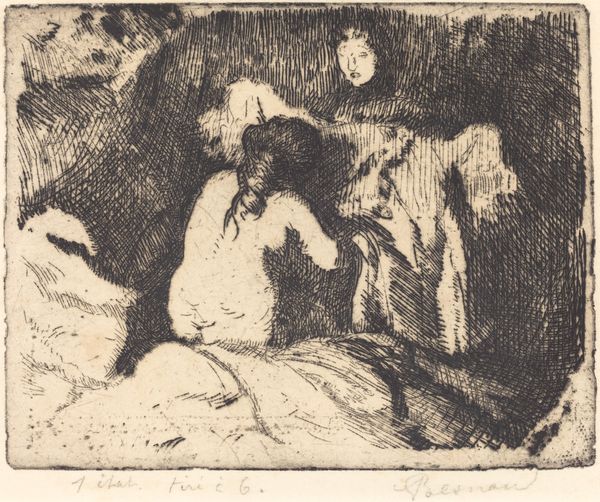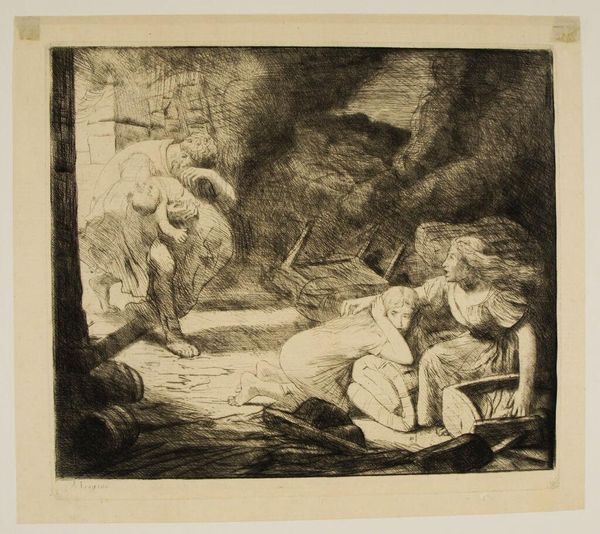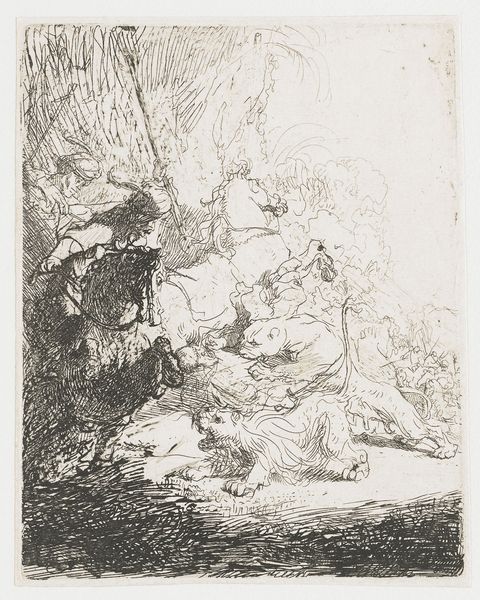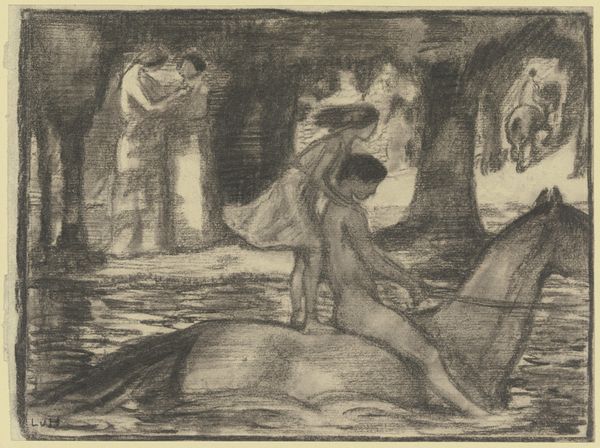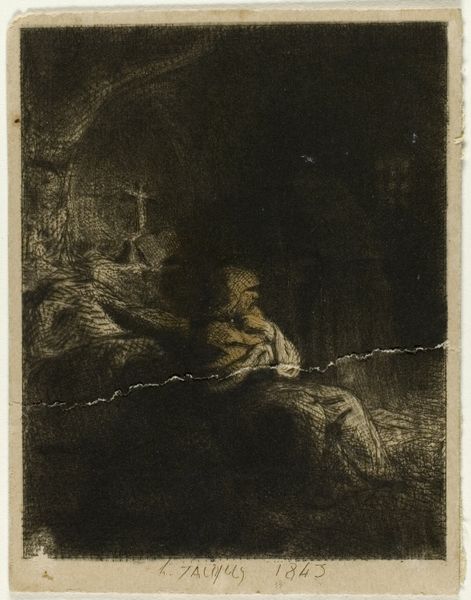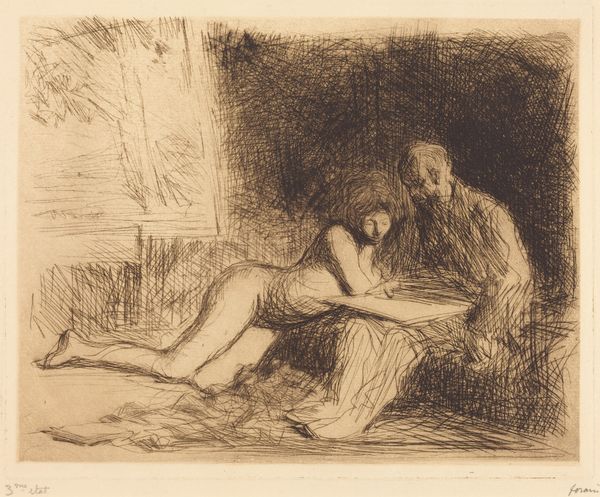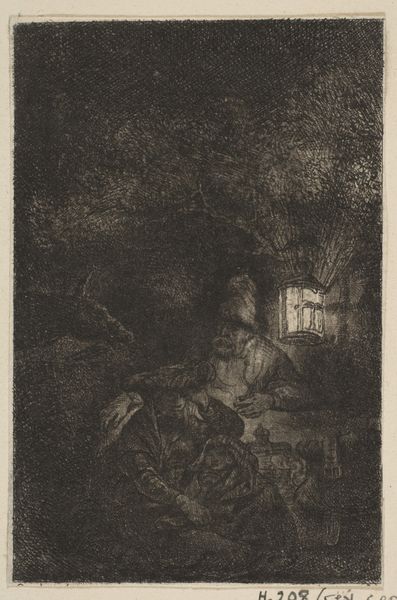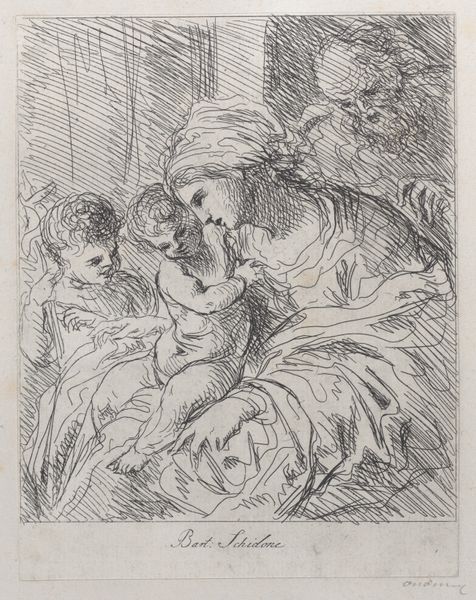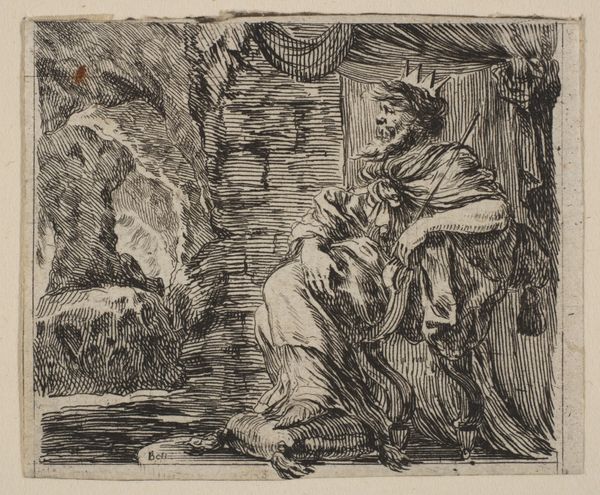
drawing, print, etching
#
drawing
#
narrative-art
# print
#
etching
#
figuration
#
history-painting
Copyright: National Gallery of Art: CC0 1.0
Editor: Here we have Alphonse Legros' etching, "The Fire, 2nd Plate." The chaotic scene and the visible fear in the figures make it immediately striking. What narrative threads do you see woven into this image? Curator: The image speaks of primal terror and the instinct for survival, doesn’t it? Notice the contrast between the family fleeing with a child on the left and the group cowering on the right. It highlights a divide in how people confront disaster - through action or paralyzed fear. Does it remind you of anything? Editor: Maybe the paintings of refugees or natural disasters, but more historicised somehow? What would these differences tell us? Curator: Exactly! Here, the bodies, almost classical in form, harken back to earlier depictions of catastrophe. Think of Pompeii. It is like the artist sees historical continuity in human suffering. The mother shielding her child... does this evoke anything for you? Editor: Of course, that iconic image of maternal protection appears in art throughout history. So you see it as tapping into our collective memory of those experiences? Curator: Precisely! Legros uses the fire as a crucible, stripping away social artifice to expose raw emotion, something constant across cultures and time. Look at how he uses light and shadow to amplify that emotional turmoil. Editor: I never would have picked up on all of those references on my own. Curator: Symbols work precisely like that! What appeared a rather basic image reveals an exploration of shared trauma through history. Editor: Yes, now that I think about the figures, it has triggered things that seem somehow ingrained in the history of the topic itself! It makes one think about not just disasters themselves, but more generally about cultural depictions and tropes.
Comments
No comments
Be the first to comment and join the conversation on the ultimate creative platform.

